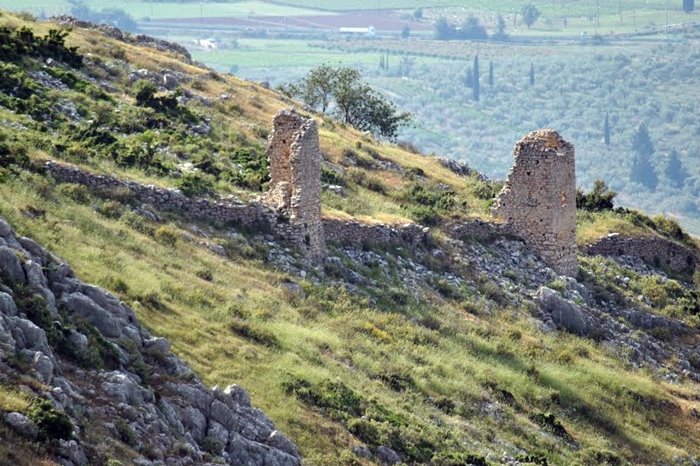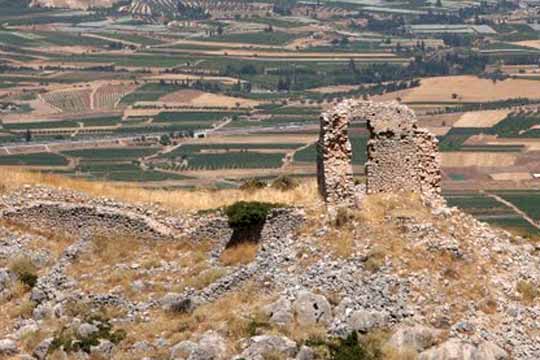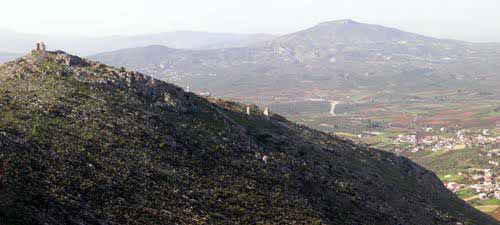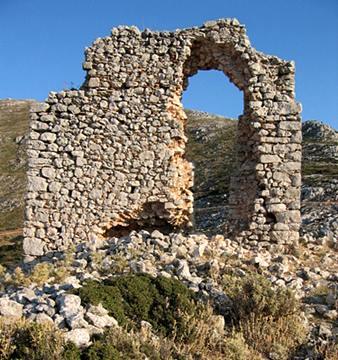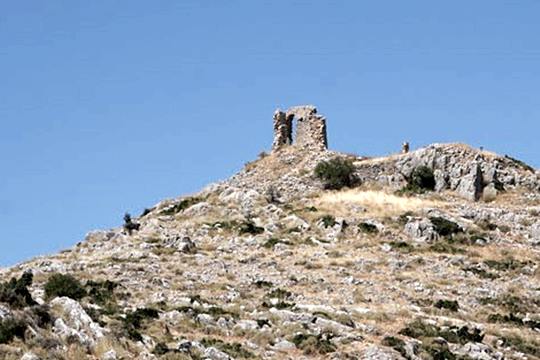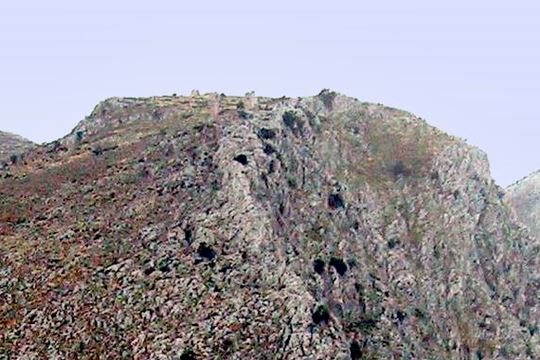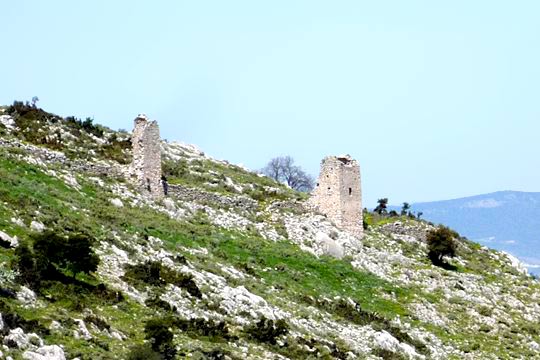Agios Vasileios, Corinth, Corinthia,Peloponnese
Castle of Agios Vasileios
| Location: |
| On a hill south of Agios Vasileios, Corinth area, Peloponnese |
| Region > Prefecture: | 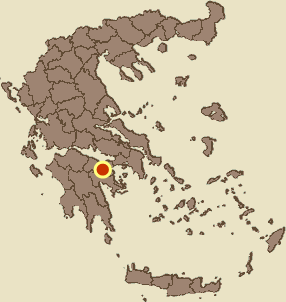 |
| Peloponnese Corinthia | |
| Municipality > Town: | |
| City of Corinth • Agios Vasileios | |
| Altitude: | |
|
Elevation ≈ 580 m (Relative Height≈200 m) |
| Time of Construction | Origin | |
| 13th cent. before 1250 | FRANKISH |
|
| Castle Type | Condition | |
| Castle |
Rather Poor
|
The scattered ruins of a typical 13th Frankish castle in Corinth area. It is south of the little town Agios Vasileios, on the west slopes of the mount Dafnia.
History
The castle was built by the Franks soon after the conquest of Peloponnese and certainly before 1250 A.D.
Based on a document by Niccolò Acciaiuoli who was the master of the region of Corinth until 1365, the castle was the center of the region and second only to Corinth. In this document the name “Agios Vasileios” is mentioned for the first time. The castle was occupied in the 15th century shortly by the Byzantines of the Despotate of Mystras and in 1460 (or earlier) by the Ottomans who destroyed it. Between 1463 and 1479, during the 1st Turkish-Venetian War, it was under Venetian rule. In the Venetian list of fiefs from that period, it is recorded that the castle was ruined.
The fortification was never rebuilt but the settlement was inhabited in the next centuries.
During the 2nd Venetian occupation (1685-1715) it is reported that the village had a population of 97 and 27 families.
Structure, Fortification & Buildings
The castle is in ruins. The length was 225 m and its width 130 m. There were 6 towers in the perimeter. Two of them still 'standing'. The other four are destroyed but their location is easily spotted. Traces of the wall are visible at the south side. There was no fortification at the west side which was naturally protected by a cliff.
Inside the castle there are ruins of several stone houses.
| First entry in Kastrologos: | October 2012 |
Sources
- Γιάννης Κουτσούκος, Το φράγκικο κάστρο του Αγίου Βασιλείου Κορινθίας (Greek only)
- Δημήτριος Περσέας Λουκίσσας, ΑΡΓΟΛΙΔΑΣ, ΚΟΡΙΝΘΙΑΣ ΠΕΡΙΗΓΗΣΙΣ, τόμος Α’, Ανοιχτή Πόλη, Αθήνα, 2021, σ.38,39
|
|
| Access |
|---|
| Approach to the monument: |
| - |
| Entrance: |
| Free access |



